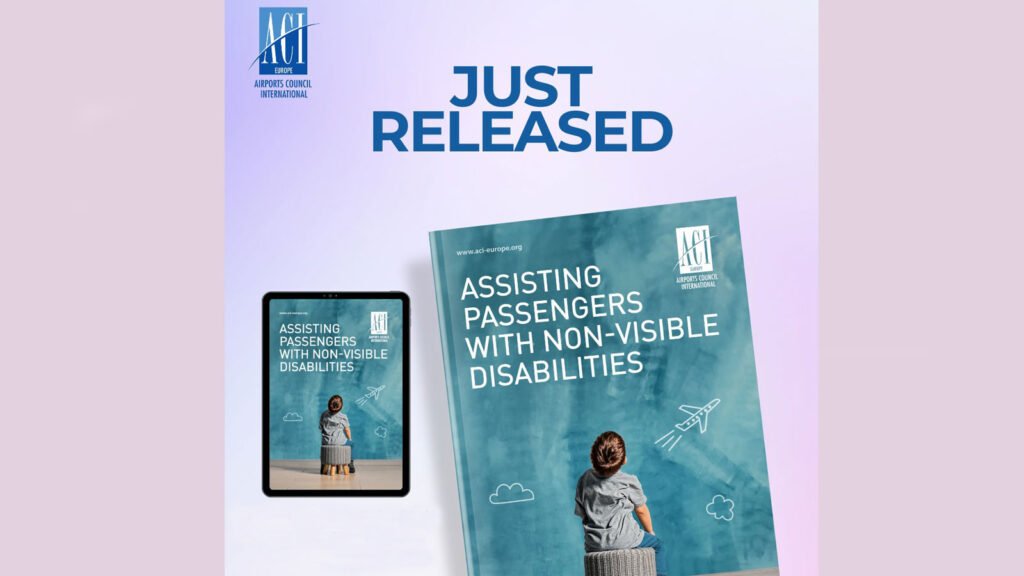BRUSSELS – ACI Europe, the trade association representing Europe’s airports, aunched the first ever guidance globally for airports assisting passengers with non-visible disabilities.
The latest data from Eurostat estimates that 1 in 4 adults in the EU is living with some form of disability, and approximately 80% of these conditions are non-visible1. Passengers with non-visible or less visible disabilities have historically been included within the broader category of passengers requiring airport assistance, and as such have been included in airport assistance services. The development of this dedicated guidance reflects the rapidly evolving context in which accessibility and inclusivity have gained a new momentum. This calls for the needs and expectations of passengers to be met with utmost consideration – including more awareness for the non-visible conditions. Airports are taking proactive steps to address these needs.
The guidance builds on a longstanding track record of European airports in caring for the most vulnerable passengers and visitors, and further expands the body of knowledge on passenger experience2 generated by ACI Europe’s dedicated expert network: the organisation’s Facilitation & Customer Services Committee.
“Assisting Passengers with Non-Visible Disabilities” is a unique tool supporting airports in gaining deeper understanding of the potential range of non-visible disabilities and the associated barriers to travel. Furthermore, it helps navigate the processing of sensitive information from passengers regarding their needs and expectations in order to provide them with the best care throughout their journey. By becoming more disability-aware and adapting their services, airports can ensure that these passengers have the same rights to free movement, freedom of choice and non-discrimination, which are the guiding principles of the European Union law3.
Olivier Jankovec, ACI Europe Director Generalsaid: “Travel is a fundamental right for all, and it is our collective responsibility to ensure that airports across Europe remain accessible to everyone. This document serves as a guiding light for airport managing bodies and their stakeholders, offering practical guidance on how to assist passengers with non-visible disabilities in an empathetic and respectful manner. Together, we can make air travel more inclusive, ensuring that every passenger’s journey is marked by dignity, respect, and equal access to the wonders of our world.”
ACI Europe has consistently championed the cause of accessible and inclusive travel, working in collaboration with various stakeholders, including the European Disability Forum (EDF)4, the umbrella organisation of persons with disabilities in Europe. ACI Europe’s Memorandum of Understanding with EDF stipulates the organisation’s commitment to these principles, notably through the establishment of the annual Accessible Airport Award, granted jointly with the Forum and recognising airports across Europe with the most advanced accessibility practices. Furthermore, the collaborative efforts with the European Institutions and their Member States underscore European airports’ dedication to advancing the rights of all travellers, regardless of their abilities.
Eurostat: Self -perceived long-standing limitations in usual activities due to health problems
Publications: ACI Europe Guidelines for Passenger Services at European Airports – 2nd EDITION and ACI Europe Guidelines for a Healthy Passenger Experience at Airports
Memorandum of Understanding between ACI EUROPE and the European Disability Forum
ACI EUROPE Guidance on assisting passengers with non-visible disabilities 2024
The article Europe’s airports put the needs of passengers with non-visible disabilities centre stage with inaugural guidance first appeared in TravelDailyNews International.


+ There are no comments
Add yours